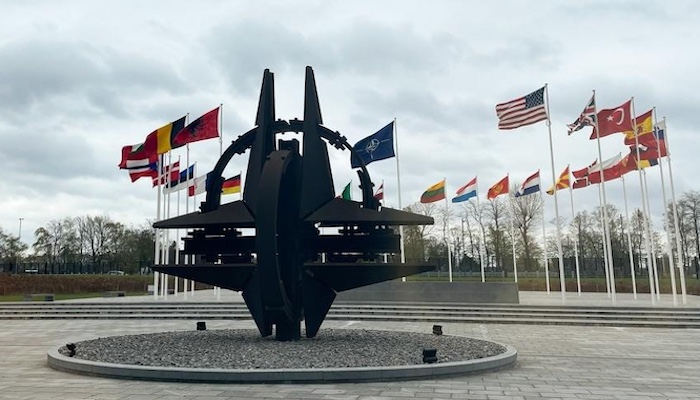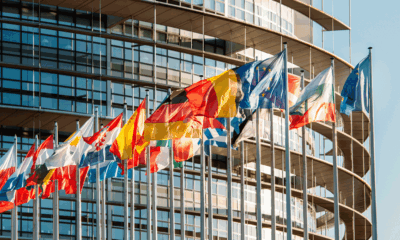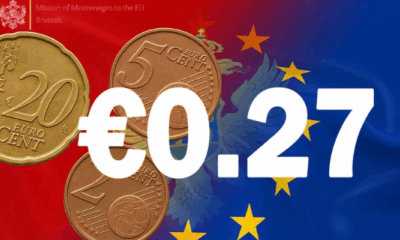World
NATO and EU Forge Stronger Ties to Combat Drone Threats

NATO Secretary-General Mark Rutte announced on Wednesday that NATO and the European Union (EU) are enhancing their collaboration to create a comprehensive defense mechanism, termed a “drone wall,” aimed at safeguarding member states from potential hostile drone incursions. This initiative responds to the growing use of unmanned aerial vehicles in espionage and cross-border assaults.
Collaboration Dynamics Between NATO and the EU
During a press conference, Rutte addressed questions regarding whether both organizations were “doubling their efforts.” He clarified that while NATO and the EU share a common strategic objective, their roles in achieving this goal are distinctly different. “NATO provides the military capabilities, while the EU contributes the soft power of the internal market and ensures the necessary funding is available,” Rutte explained.
This renewed cooperation reflects a more unified European approach to emerging security challenges. Experts have pointed out that the escalating threat from unmanned aerial systems necessitates a coordinated response. The collaboration aims not only to enhance defensive capabilities but also to streamline resources and strategies among member states.
Implications for European Security
The increasing reliance on drones for surveillance and attacks has prompted both NATO and the EU to reassess their security frameworks. According to Rutte, the joint efforts will focus on developing technologies and strategies that can effectively counter these aerial threats. This initiative is expected to involve significant investment in research and development, as well as joint military exercises to prepare member states for potential drone-related incidents.
In recent years, the proliferation of drones has transformed the landscape of modern warfare, making it a critical priority for defense organizations. Rutte’s statements suggest that NATO and the EU are not only acknowledging the reality of these threats but are also taking proactive steps to mitigate them.
The collaboration between NATO and the EU is seen as a significant step towards enhancing collective security in Europe, especially as geopolitical tensions continue to rise. As member states face increasing challenges from adversarial forces utilizing advanced technology, the establishment of a drone wall could serve as a deterrent against such incursions.
As the situation develops, NATO and EU officials are expected to provide further insights into specific plans and timelines for the implementation of this defense initiative. The commitment to a unified response underscores the importance of solidarity among European nations in the face of evolving security threats.
The implications of this collaboration extend beyond military strategy; they also highlight the need for a comprehensive policy framework that encompasses technological, economic, and diplomatic dimensions. As both organizations work towards a more integrated approach, the focus will remain on ensuring the safety and security of all member states in an increasingly complex global environment.
-

 Entertainment3 months ago
Entertainment3 months agoAnn Ming Reflects on ITV’s ‘I Fought the Law’ Drama
-

 Entertainment4 months ago
Entertainment4 months agoKate Garraway Sells £2 Million Home Amid Financial Struggles
-

 Health3 months ago
Health3 months agoKatie Price Faces New Health Concerns After Cancer Symptoms Resurface
-

 Entertainment3 months ago
Entertainment3 months agoCoronation Street’s Carl Webster Faces Trouble with New Affairs
-

 Entertainment3 months ago
Entertainment3 months agoWhere is Tinder Swindler Simon Leviev? Latest Updates Revealed
-

 Entertainment4 months ago
Entertainment4 months agoMarkiplier Addresses AI Controversy During Livestream Response
-

 Science1 month ago
Science1 month agoBrian Cox Addresses Claims of Alien Probe in 3I/ATLAS Discovery
-

 Health4 months ago
Health4 months agoCarol Vorderman Reflects on Health Scare and Family Support
-

 Entertainment4 months ago
Entertainment4 months agoKim Cattrall Posts Cryptic Message After HBO’s Sequel Cancellation
-

 World2 weeks ago
World2 weeks agoBailey Announces Heartbreaking Split from Rebecca After Reunion
-

 Entertainment3 months ago
Entertainment3 months agoOlivia Attwood Opens Up About Fallout with Former Best Friend
-

 Entertainment2 weeks ago
Entertainment2 weeks agoCoronation Street Fans React as Todd Faces Heartbreaking Choice




















